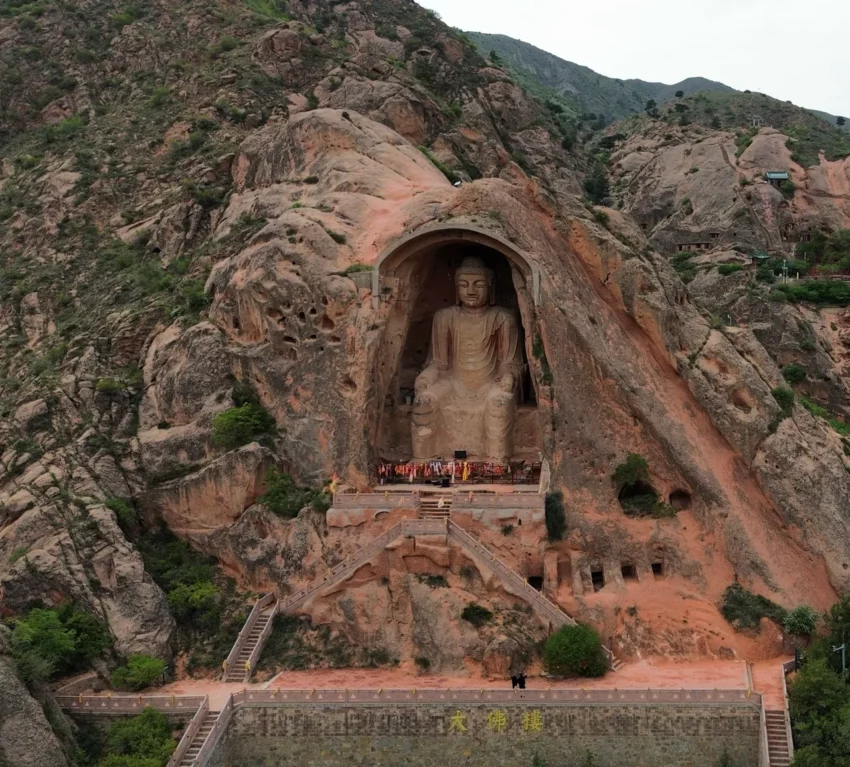Overview of Xumishan Grottoes
The Xumishan Grottoes are a significant collection of over 130 Buddhist cave temples. Builders constructed these temples from the fifth century to the tenth century AD. They are located on the eastern edge of Mount Xumi in the Ningxia Hui Autonomous Region of China.
Get your dose of History via Email
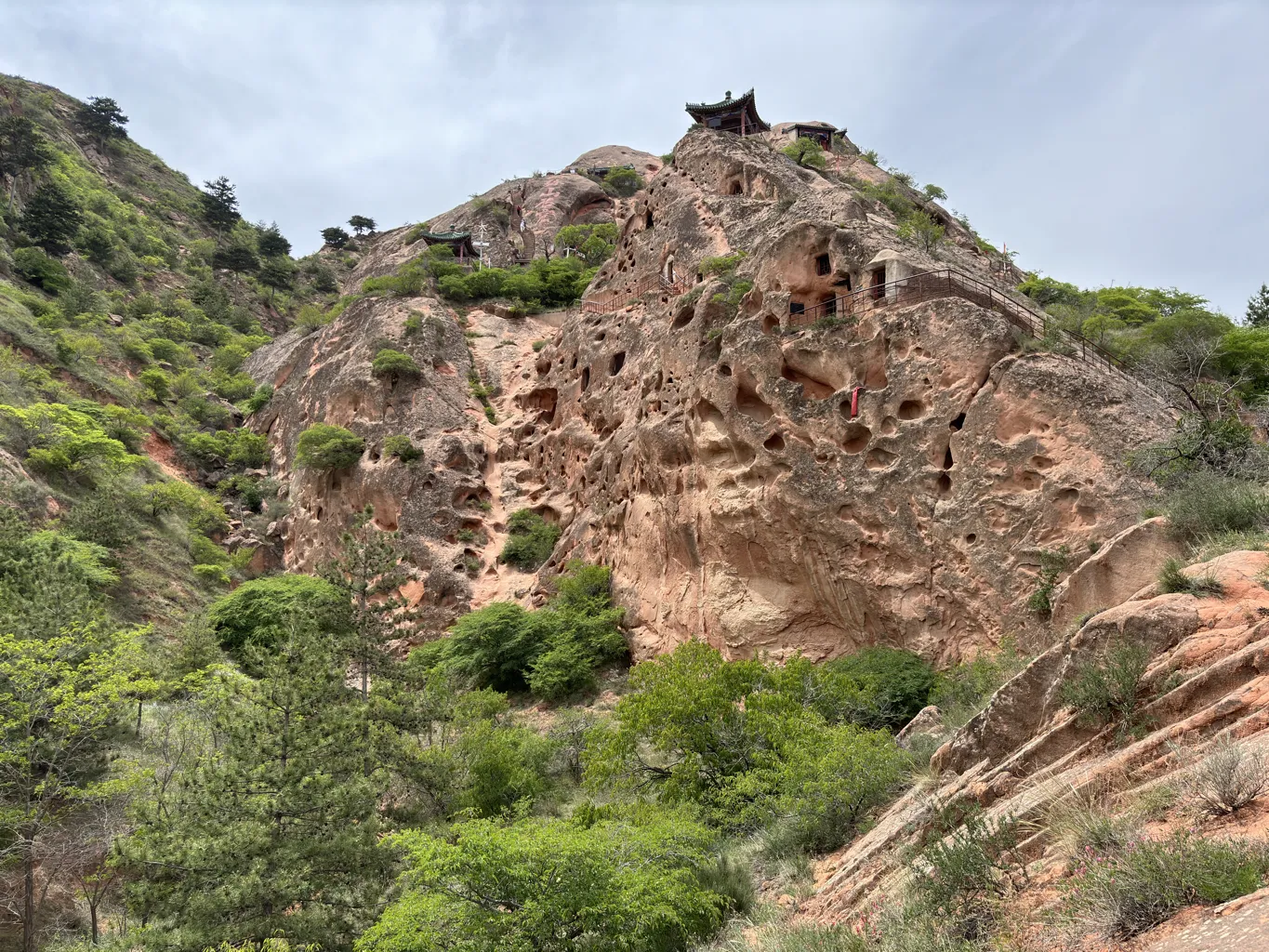
Historical Context
The construction of the Xumishan Grottoes began during the Northern Wei dynasty, which lasted from 368 AD to 534 AD. Subsequent dynasties, up to the Tang dynasty, which ended in 906 AD, periodically reconstructed these sites. Originally, the area bore the name Fengyishan before the grottoes’ construction.
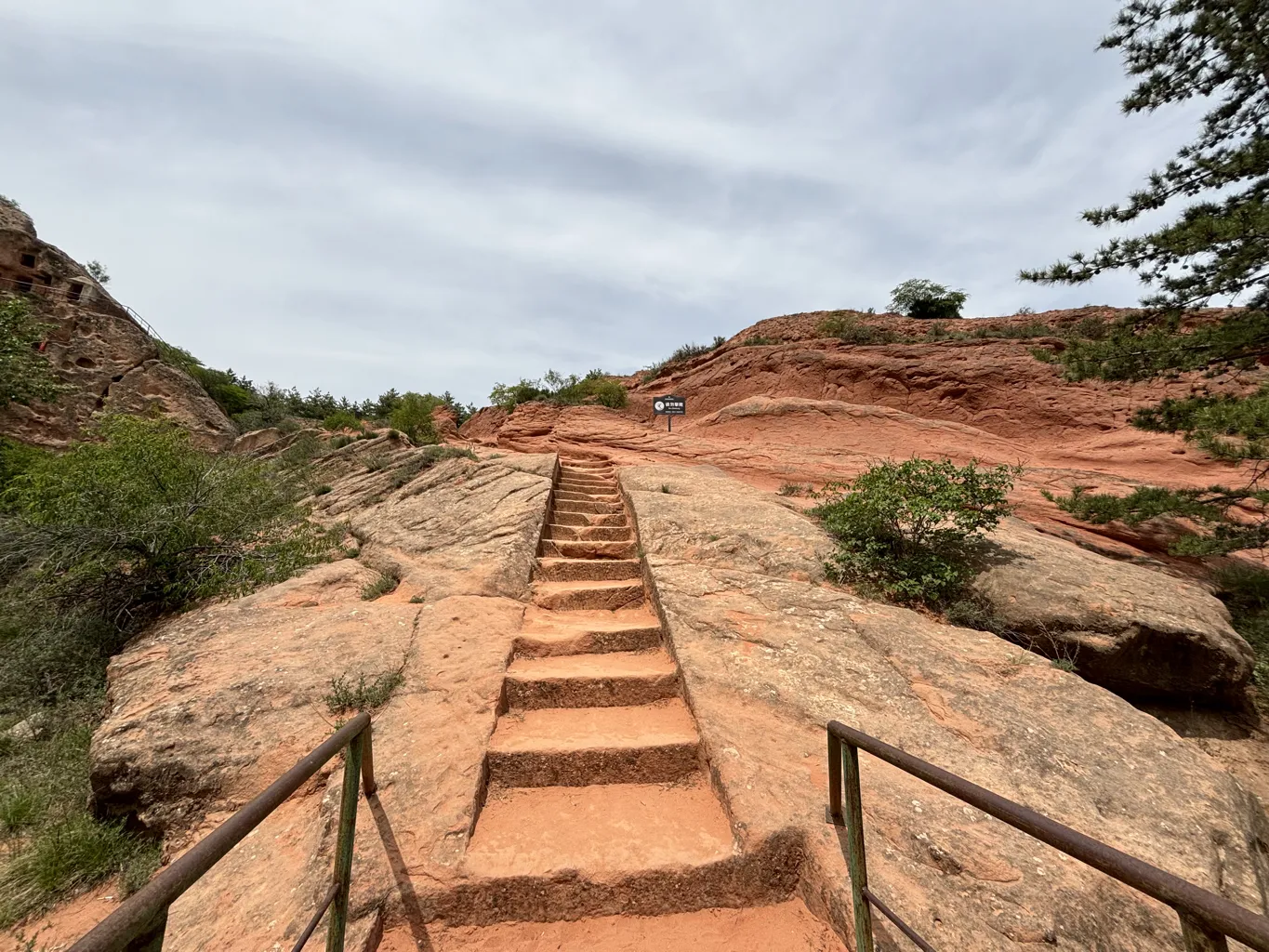
Cultural and Trade Influences
The Xumishan Grottoes were strategically situated along the Silk Road. This location made them a crucial point for the spread of Buddhism. The decorative motifs within the grottoes show clear influences from India and Central Asia. These influences highlight the cultural exchange facilitated by the Silk Road.
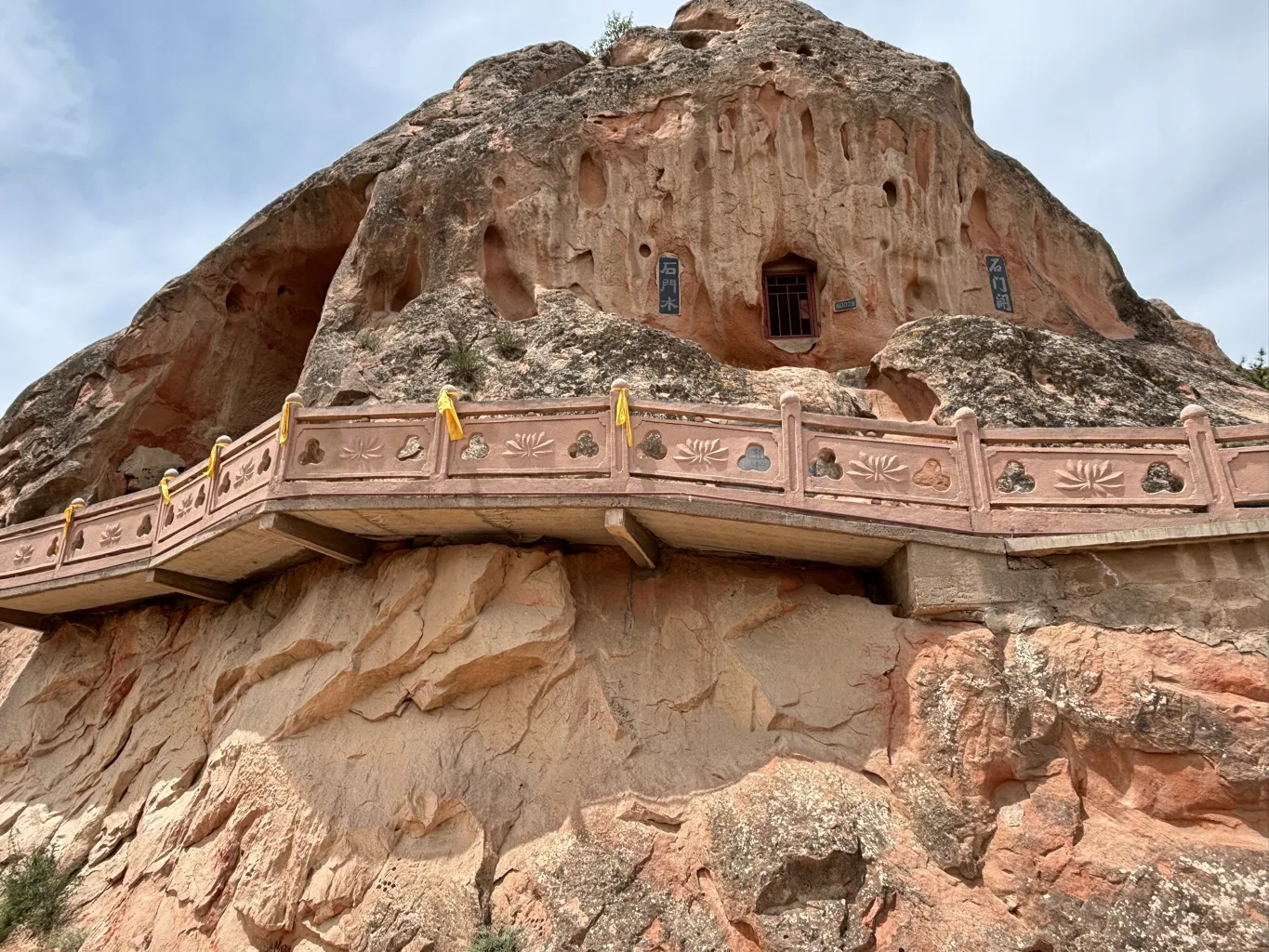
Historical Significance of Dafo Tower
Emperor Wu of the Tang dynasty, who ruled from 624 to 705 AD, oversaw the construction of the Dafo Tower, also known as Cave 5. This site houses a remarkable Buddha sculpture. Standing at 20.6 meters, the sculpture showcases a dignified expression and posture. It also features an elaborate Kashaya, a round face, and exceptional carving skills. These elements are characteristic of Tang dynasty sculptures, known for their full-figured bodies and elegant attire.
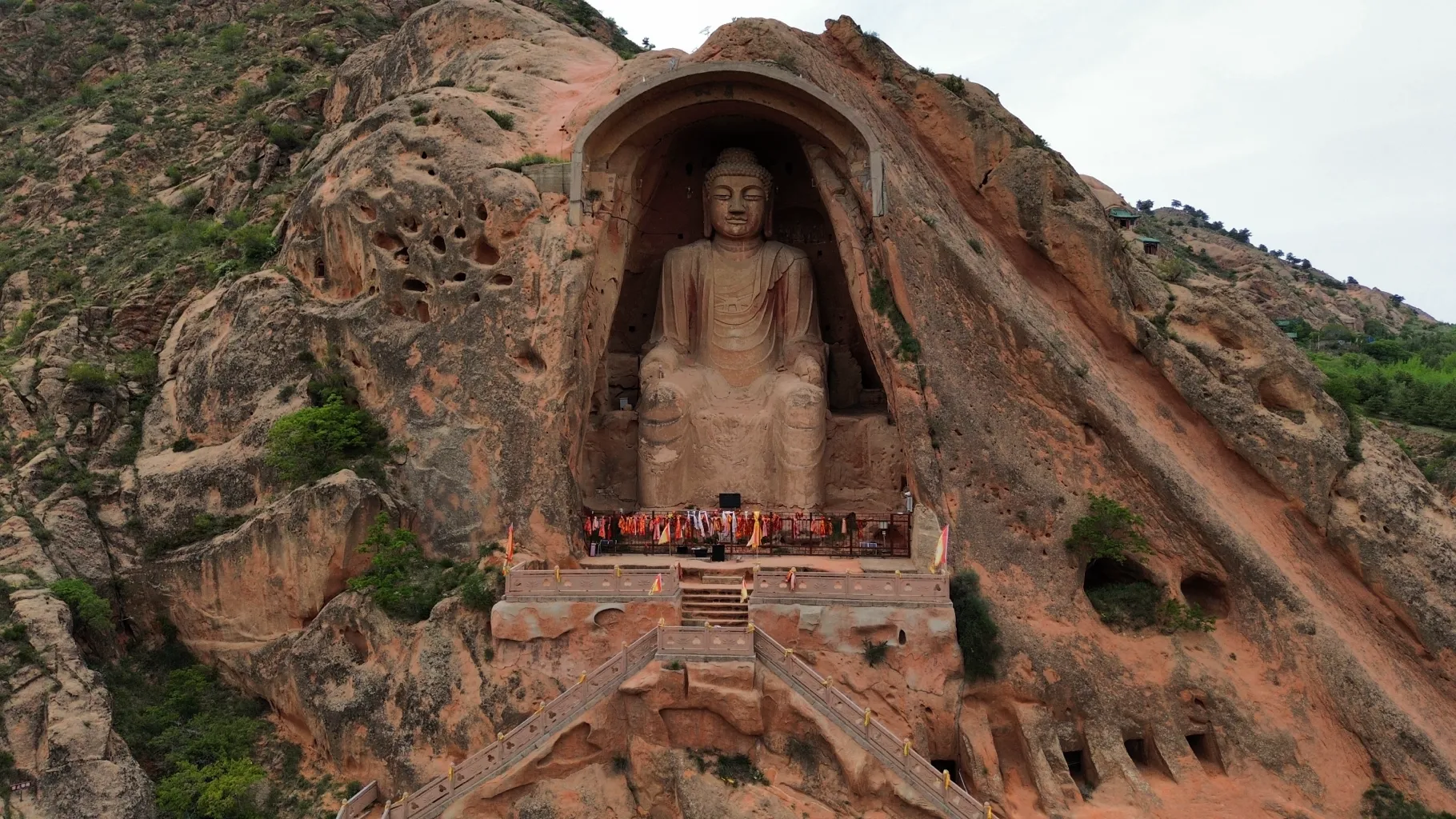
Artistic Mastery and Cultural Heritage
The Buddha sculpture in Dafo Tower exemplifies the artistic genius and intellectual depth of ancient Chinese artists. It stands as one of humanity’s most valued treasures. The sculpture’s intricate details and majestic form reflect the sophisticated artistry of the period.
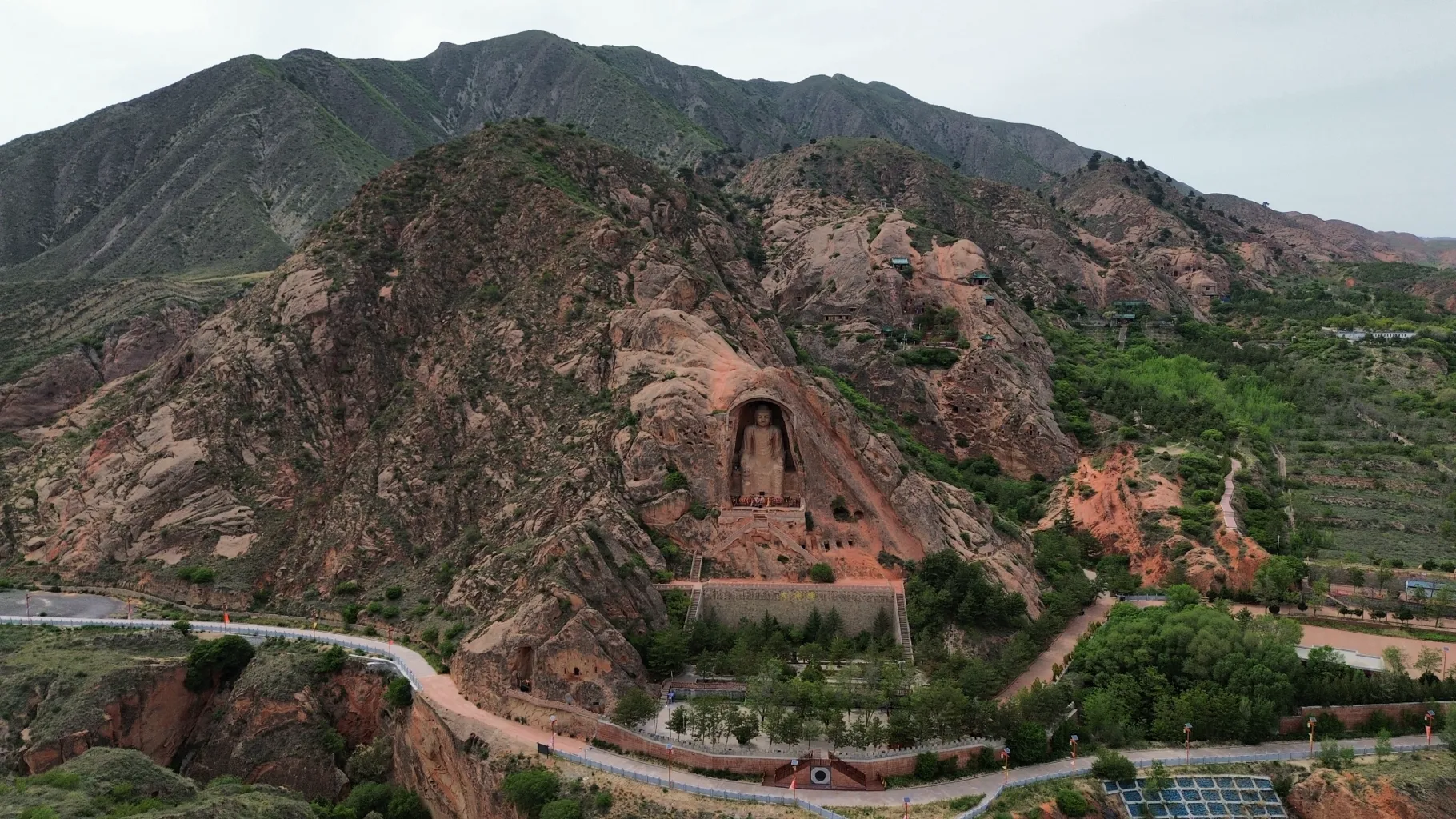
Preservation Efforts and Challenges
The name “Dafo Tower” originates from a three-story wooden structure built to shield the Buddha statue. Unfortunately, the 1920 Haiyuan Earthquake destroyed this protective tower. Despite this, the Buddha sculpture remains a testament to the enduring legacy of the Tang dynasty’s artistic achievements.
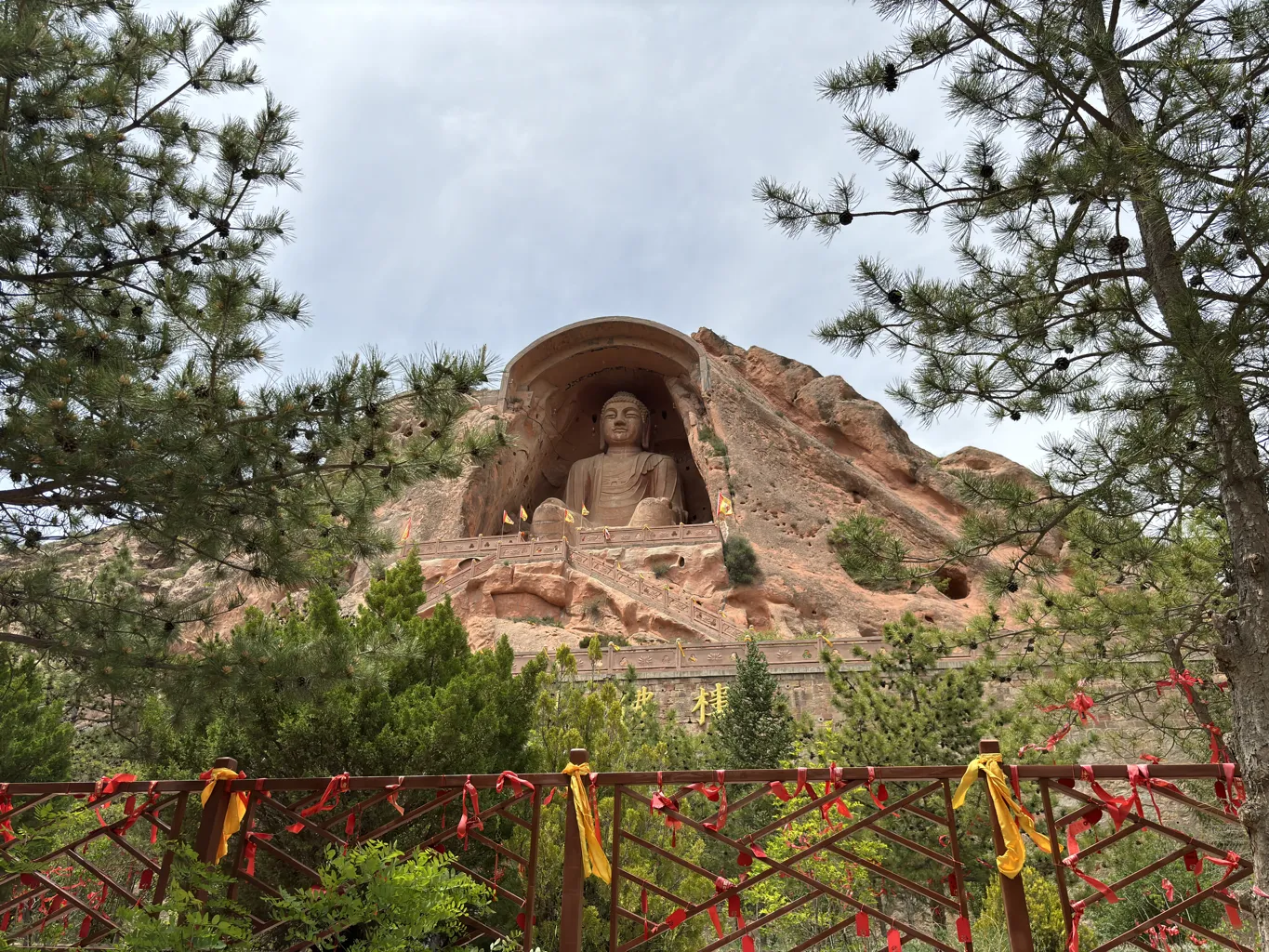
Shimen Pass: A Historical Overview
Shimen Pass, a significant landmark, splits Xumi Mountain into two with the Shimen River flowing from west to east. This pass is strategically located on the eastern section of the northern part of the ancient Silk Road. It derives its name from its resemblance to a stone gate. Shimen Pass served as a crucial transport hub that linked the western regions to the central plains of China. Moreover, it functioned as a vital military fortress. Kingdoms in the central plains utilized it to defend against local ethnic groups. Since the Sui and Tang dynasties, Shimen Pass, along with Yizang, Zhisheng, Shixia, Muxia, Liupan, and Myzheng, has been recognized as one of the Seven Passes of Yuanzhou.
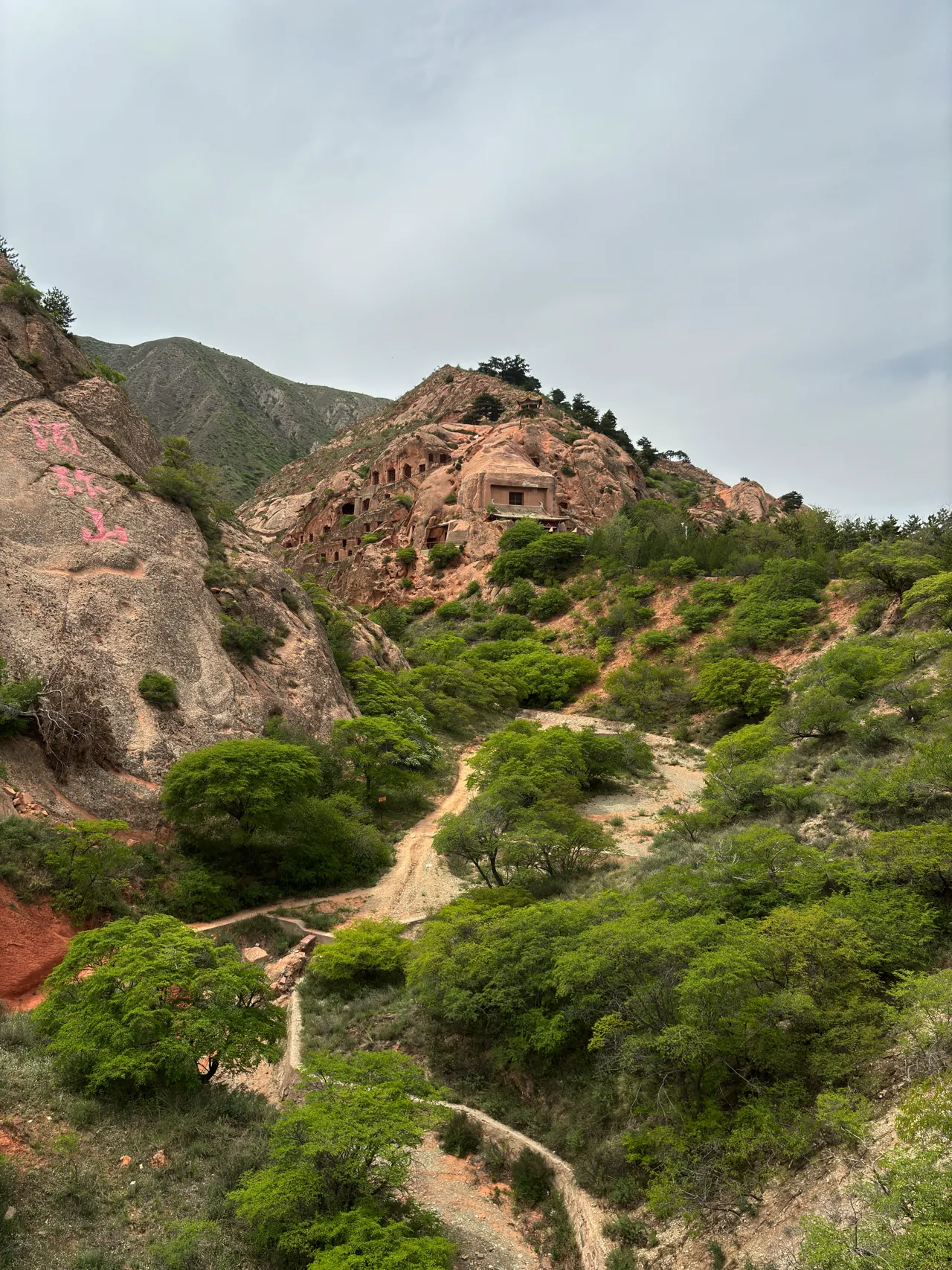
The Enigma of the Flying Rock
The Flying Rock, weighing approximately 5 tons, holds a unique place in Chinese cultural history. Its name stems from the classic Chinese novel “Journey to the West.” According to the story, the Monkey King, along with this rock, was blown to Mount Sumeru Grottoes by Princess Iron Fan’s Palm Leaf Fan. Unlike the red sandstones typical of the Mount Sumeru Grottoes region, the Flying Rock is composed of acidic granite. This makes it distinct in texture, color, and hardness. Remarkably, it is the only rock of its kind found within a 50-kilometer radius of Mount Sumeru Grottoes.
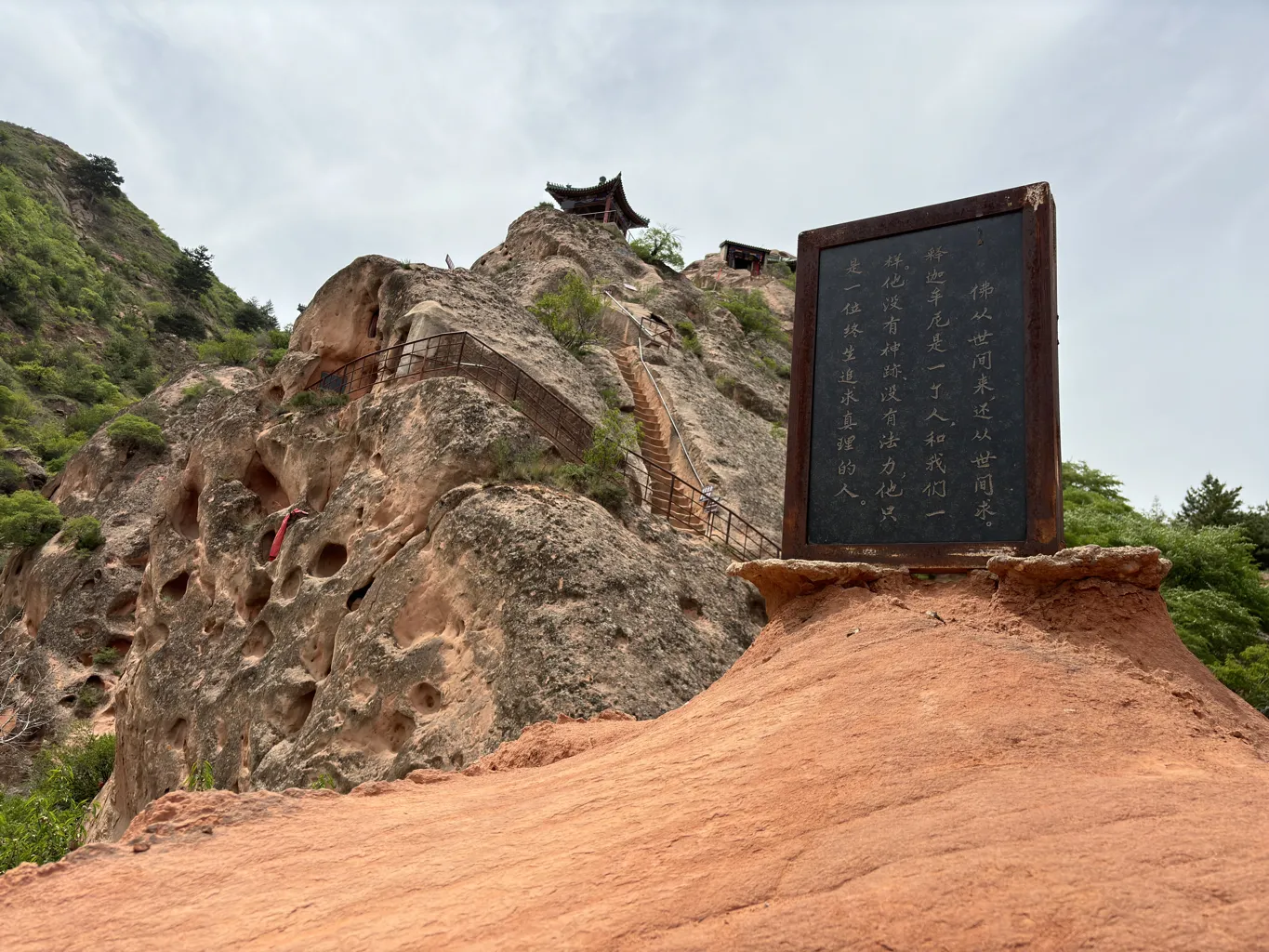
Zisun Palace Area Overview
The Northern Wei dynasty saw the construction of the caves in the Zisun Palace area. Among these, Cave 14, known as the Pist Cave, stands on the Xul Mountain. Additionally, Cave 24 plays a significant role, as it depicts the life of Buddha Sakyamuni from his birth to his enlightenment.
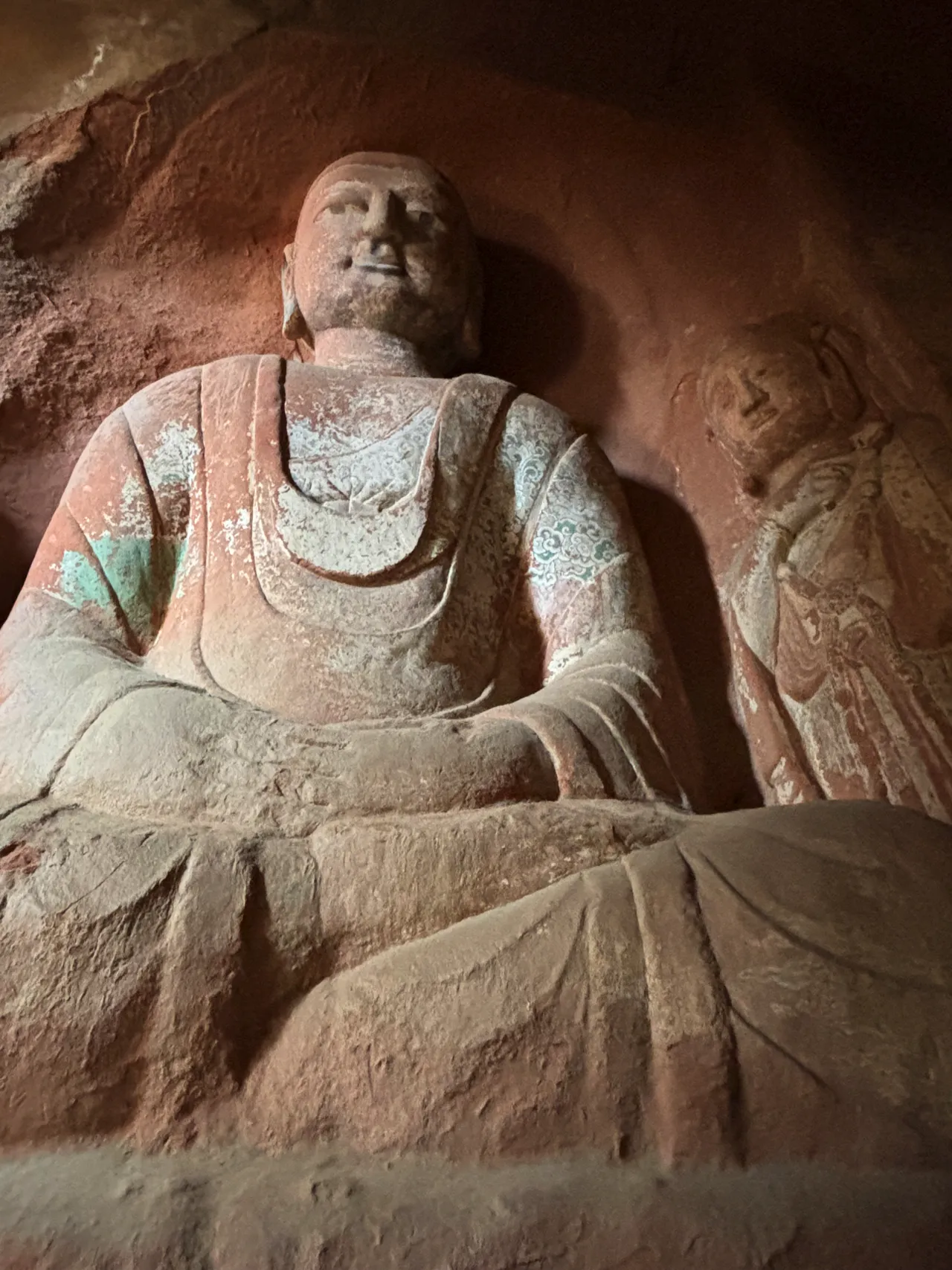
Artistic Characteristics of the Sculptures
The sculptures within these caves are notable for their refined aesthetics. They feature long necks, narrow shoulders, and slim bodies, reflecting the artistic style of the period. Moreover, these figures often appear in a mudra of teaching or meditation, enhancing their spiritual significance. The attire of these sculptures is particularly intricate, marked by loose robes adorned with smocking and chain stitching, which adds to their delicate appearance.
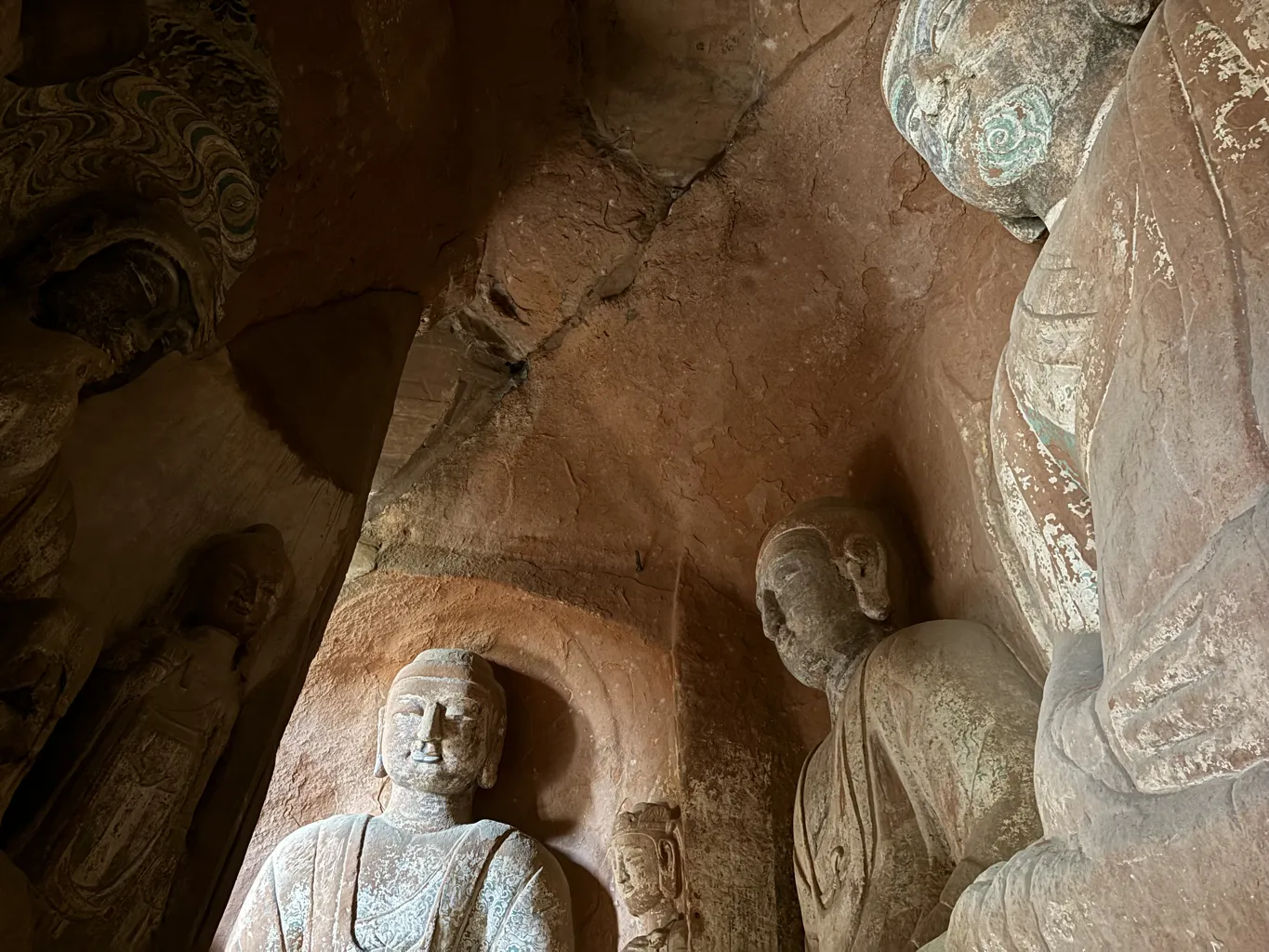
Significance of Cave 25
Cave 25, known as Zisun Palace, is unique within the area. It houses three sculptures of Taoist immortals, known collectively as the Mother. Remarkably, this cave represents a rare convergence of Buddhist and Taoist practices, showcasing the interplay of these two major religious traditions within a single sacred space. This integration highlights the cultural and spiritual diversity of the period, making Cave 25 a focal point of historical and religious study.
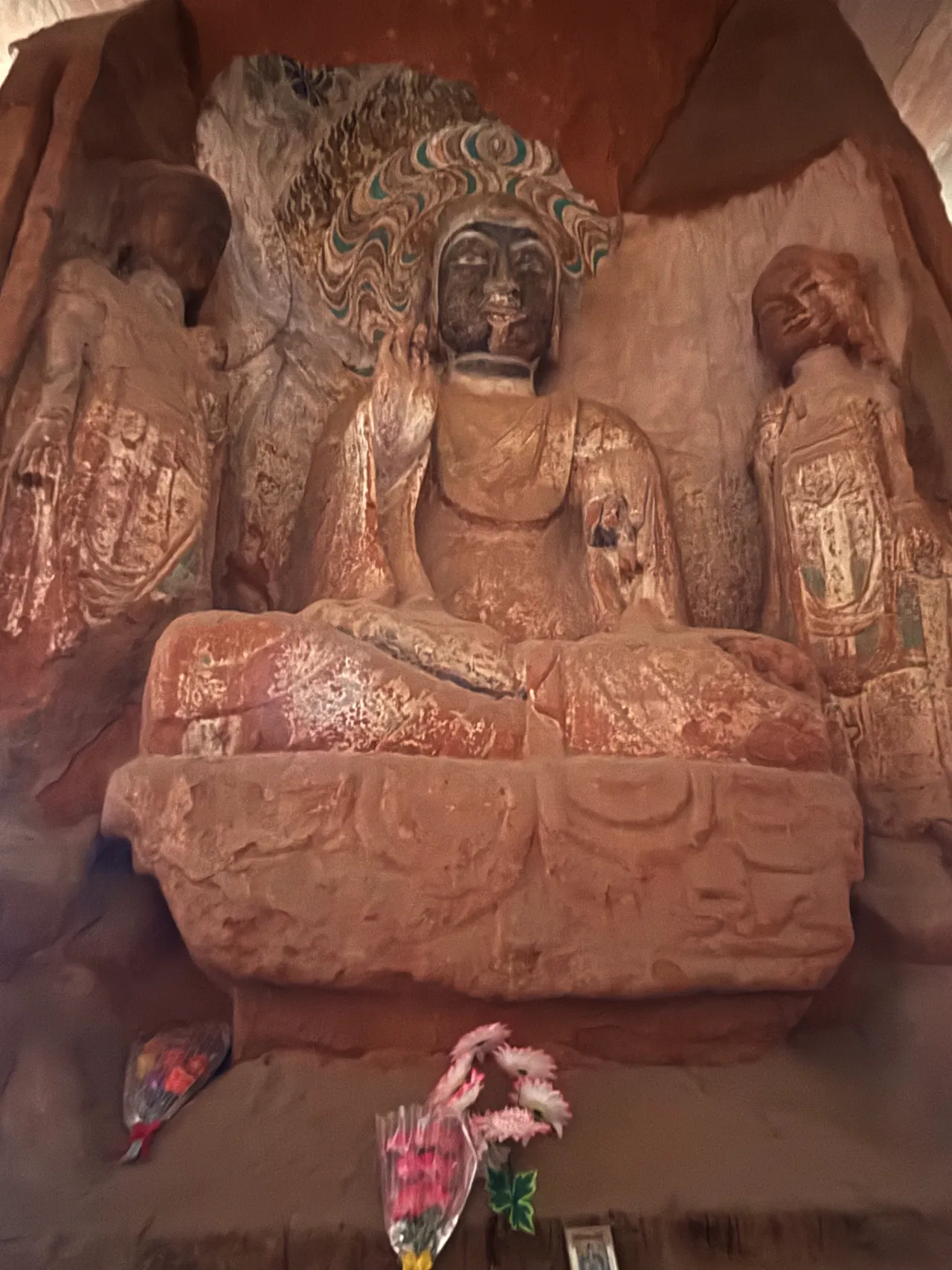
History of Yuanguang Temple
Yuanguang Temple, originally part of Jingyun Temple during the Tang Dynasty, received its name from the Yuan Dynasty government. It stands as the sole Buddhist monastery on Xumi Mountain. In 1443, Chuojiwangsu, the abbot of Jingyun Temple, approached Emperor Yingzong of Ming, Zhu Qizhen, with a request. He asked to rename the temple to Yuanguang Temple following its reconstruction.
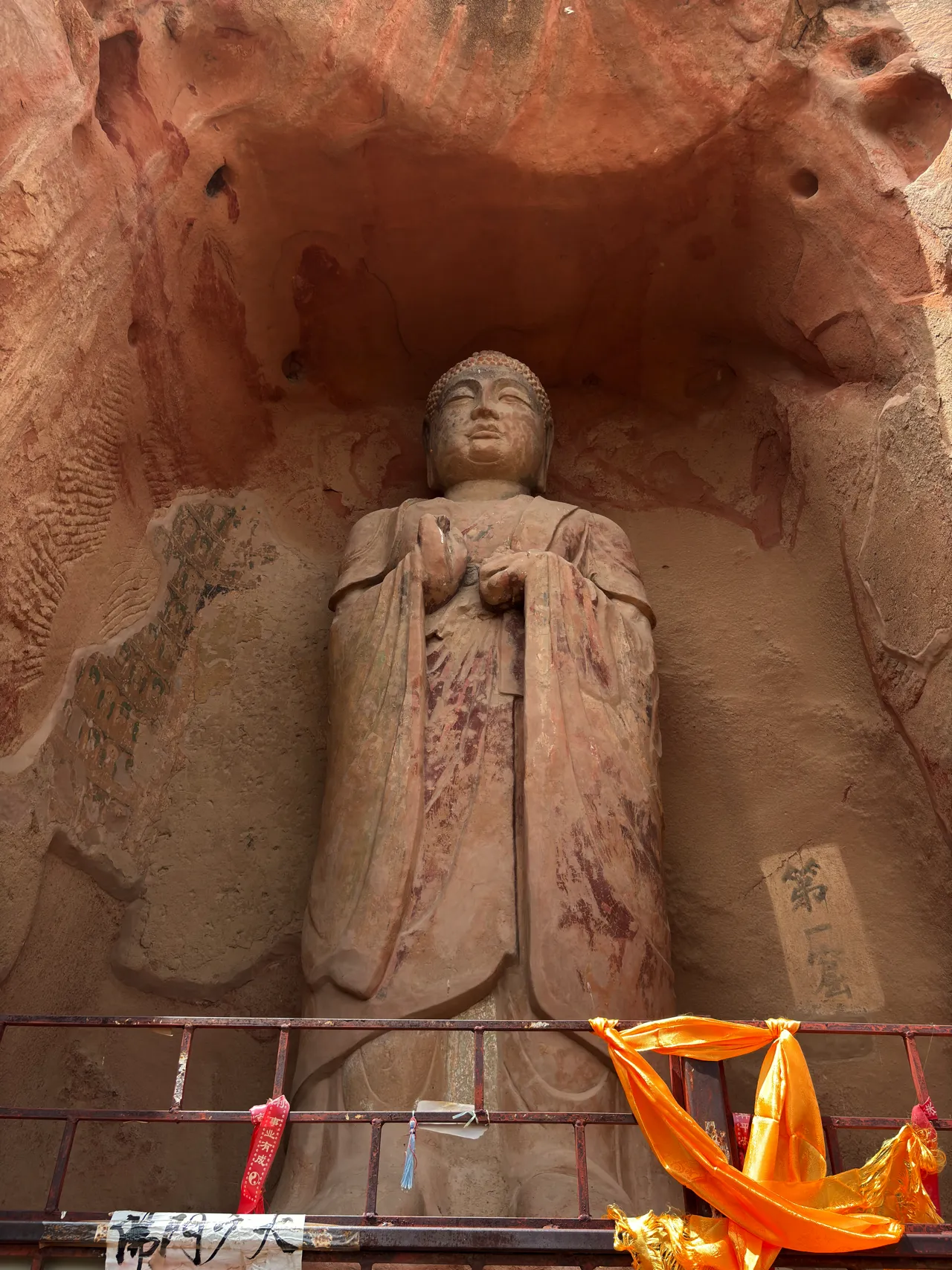
Renaming and Recognition
By 1447, Zen monk Chen Jue had successfully petitioned the emperor. He secured the grant of the Tripitaka of Yongle North Tibet for the temple. This significant addition transformed Yuanguang Temple into a renowned Buddhist holy site and a popular tourist destination.
Destruction and Ruins
Unfortunately, the temple suffered extensive damage over the years. Wars devastated the temple, its buildings, and its precious Buddhist scriptures. Additionally, the catastrophic Haiyuan Earthquake in 1920 further ruined the temple structures. Despite these challenges, remnants of its past, like caves 45, 46, and 48 from the Northern Zhou period, still exist, marking the historical significance of the site.
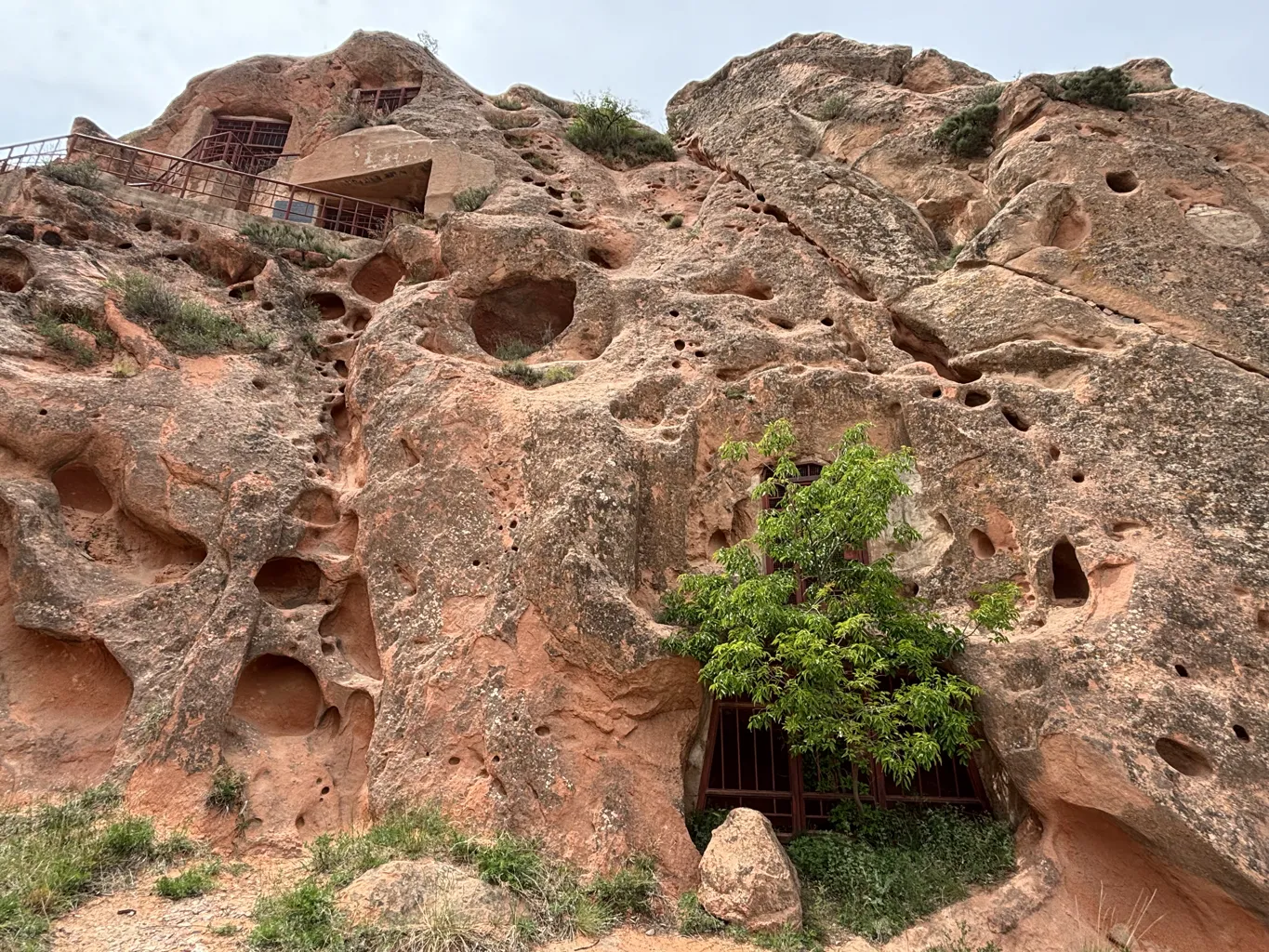
Architectural and Artistic Features of Cave 45
Cave 45, carved during the Northern Zhou Dynasty between 557 and 581 AD, showcases a unique architectural style. The cave resembles an inverted bucket with a central pillar, designed to imitate wooden rafters. This central pillar features a transverse square column at the top and a lotus seat at the bottom. Additionally, the cave includes tent-like niches on each side, each housing statues of a Buddha and two Bodhisattvas.
Artistic Decorations and Statues
The artistic decorations within Cave 45 are both exquisite and delicate. The cave walls feature rectangular niches at the bottom, which depict vegetable growers. The statues, characterized by plump faces and strong bodies, utilize both high relief and shallow relief carving techniques. These techniques effectively portray the robust images of the Buddhists. In total, the cave contains 86 statues of varying sizes and 15 inscriptions and calligraphic works.
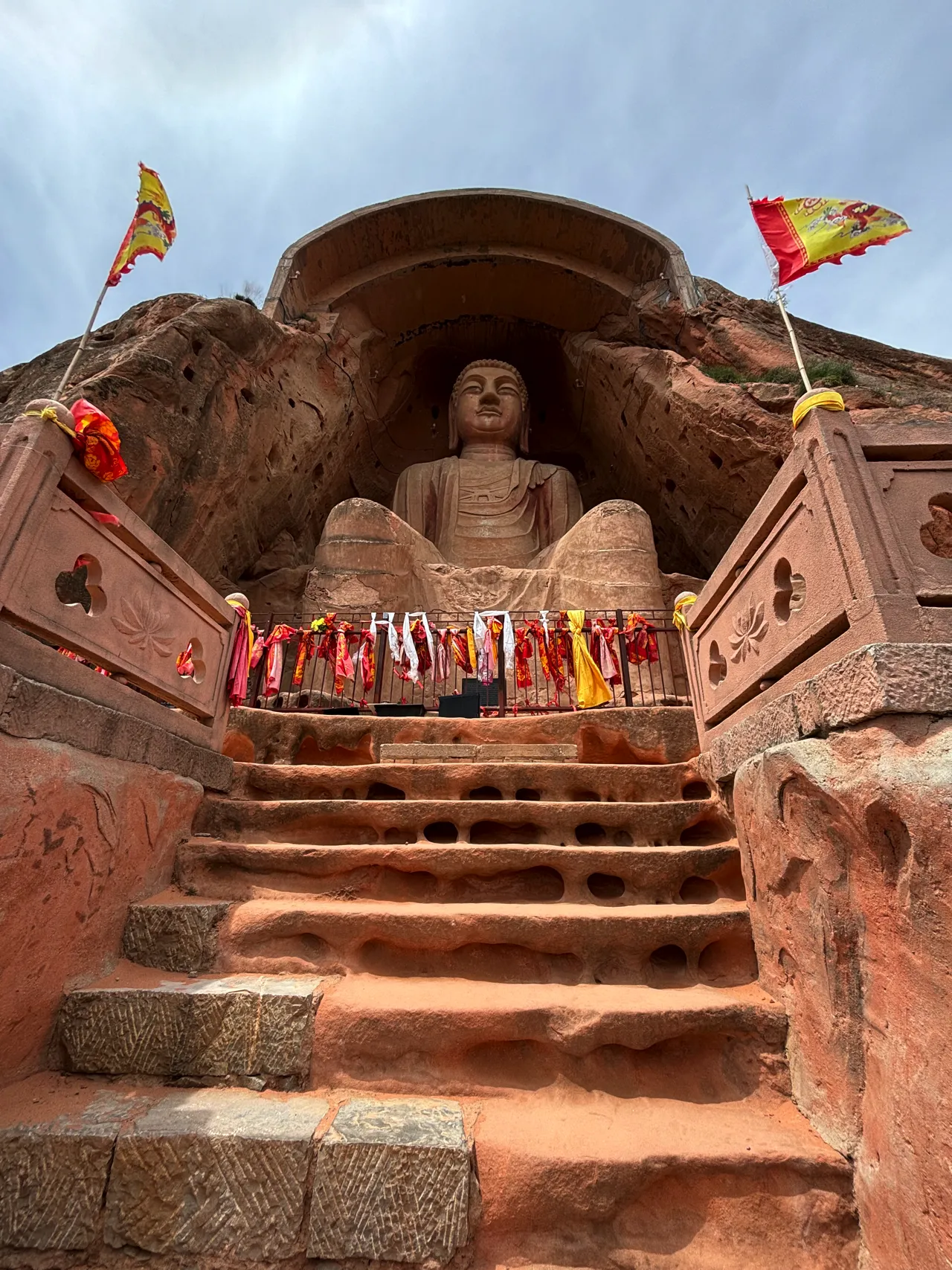
Symbolism and Cultural Significance
The base of the central pillar in Cave 45 is adorned with figures of people dancing and performing, while the ceiling is decorated with images of flying Apsaras, lotuses, and changing clouds. These elements not only enhance the cave’s aesthetic appeal but also reflect the cultural and religious practices of the time. The cave’s design and decorations exemplify the artistic characteristics of grotto sculptures from the Northern Zhou Dynasty, representing a pinnacle in the art form alongside other caves on Xumi Mountain.
Architectural and Artistic Features of Cave 46
Cave 46, carved during the Northern Zhou Dynasty, showcases a unique architectural style. The cave features a bucket ceiling and a central pillar, enhancing its structural integrity. Each corner of the cave houses pillars that mimic wooden rafters, a testament to the ingenuity of ancient craftsmen.
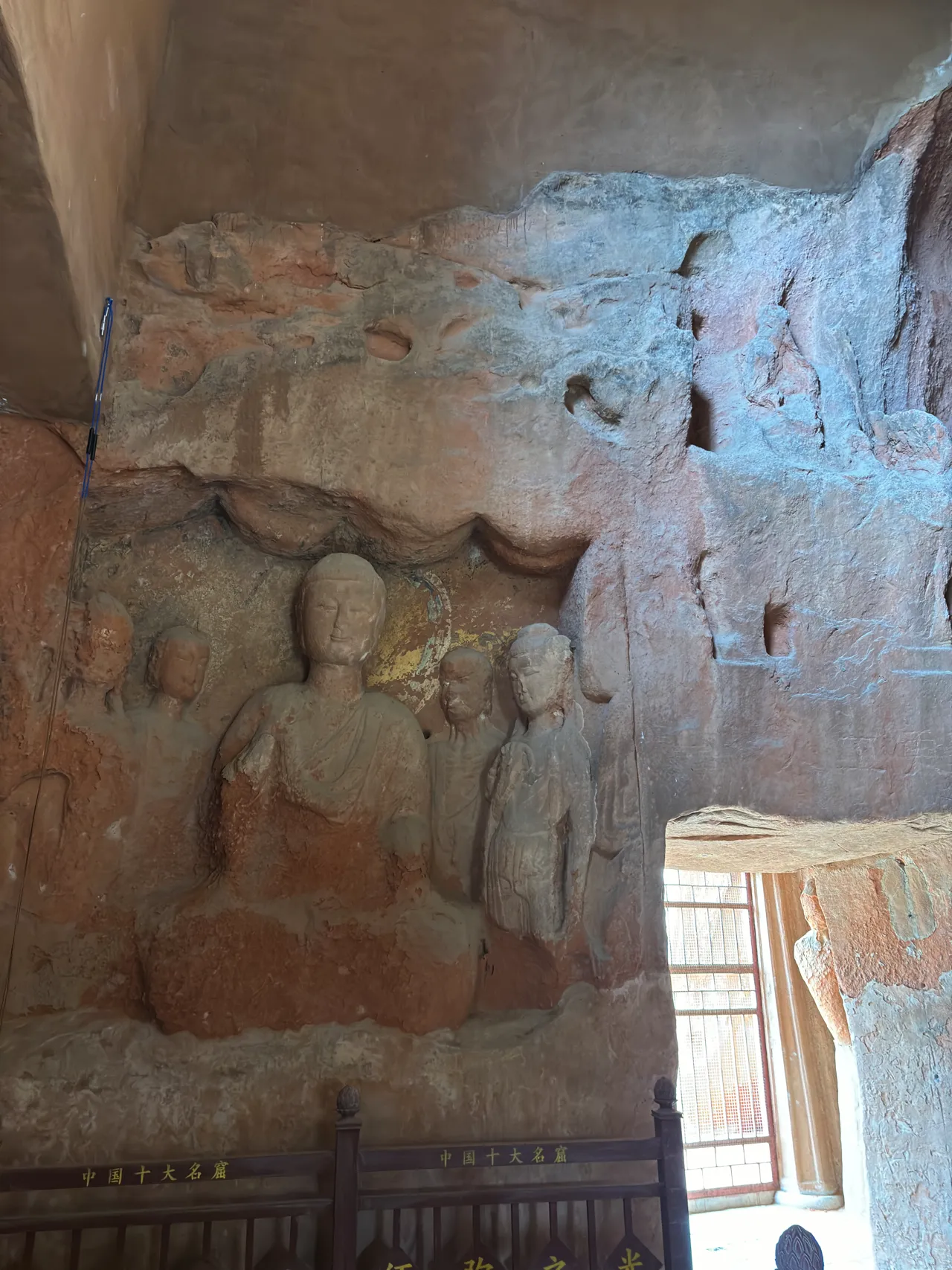
Spatial Layout and Iconography
The cave includes three niches strategically placed on the northern, eastern, and western walls. Additionally, the southern wall, adjacent to the cave door, hosts a niche on each side of the central pillar. This arrangement not only balances the spatial layout but also enriches the visual experience. At the base of each wall, craftsmen placed lotus seats, adding a spiritual dimension to the cave’s ambiance.
Decorative Elements and Sculptural Ensemble
The ceiling of Cave 46 is adorned with transverse square columns and angle pillars in every corner. These elements converge on an inverted bucket arch centered over the pillar, creating a focal point. The cave houses an impressive collection of statues, including one Buddha, two attendants, two Bodhisattvas, and a crossed-foot Bodhisattva flanked by two attendant Bodhisattvas. Another ensemble features one Buddha and two Bodhisattvas, illustrating the rich iconographic program of the cave.
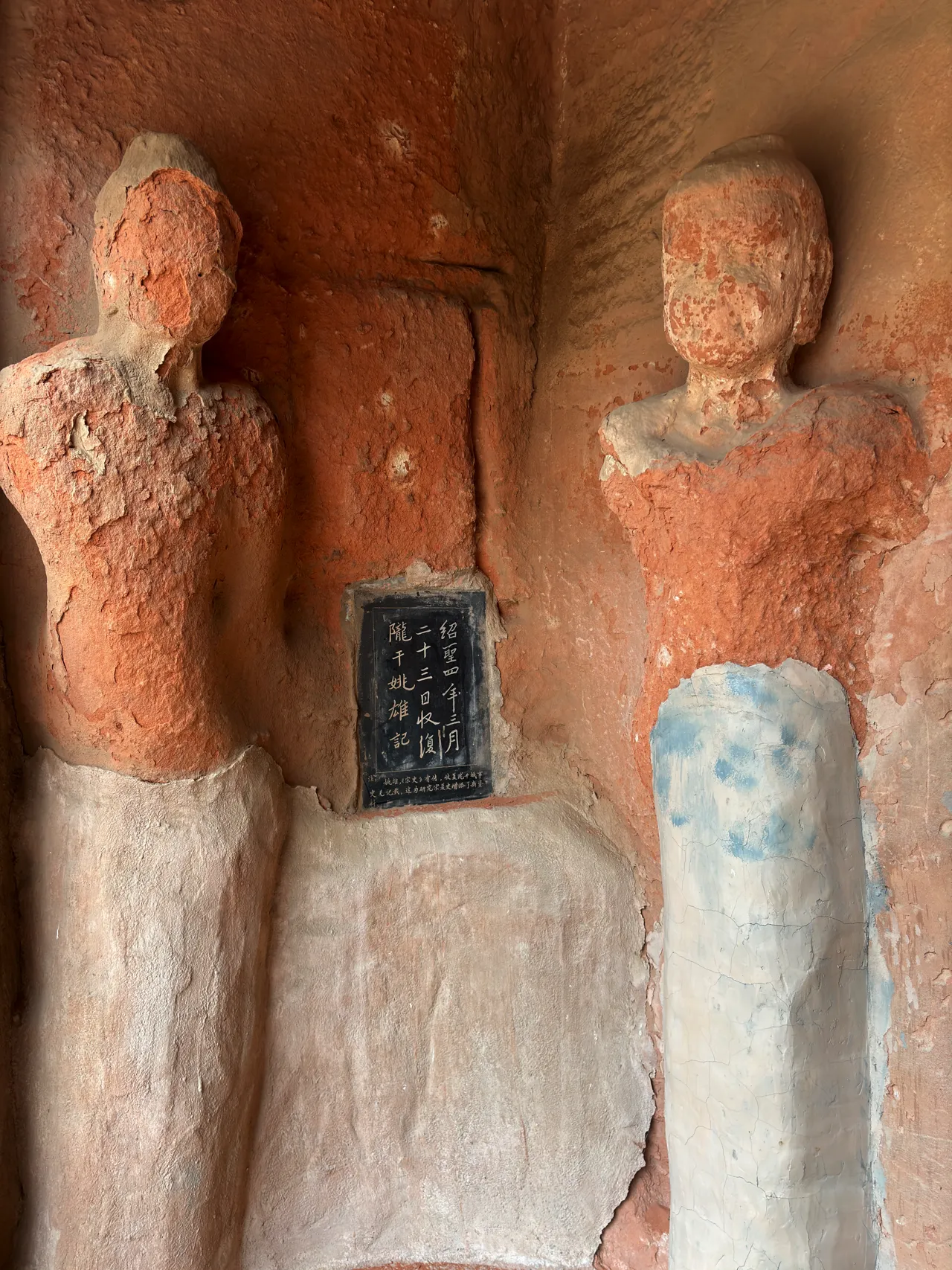
Artistic Innovations and Later Additions
Later generations contributed to the cave’s artistic legacy by adding sculptures on each side of the central pillar. These additions include depictions of dances, performances, treasure bottles, a Boshan censor, vegetable growers, and other immortals. The relief carvings feature flying Apsaras, lotuses, and clouds, infusing the space with dynamism and ethereal beauty. Numerous sculptures bear inscriptions and calligraphic works, offering valuable insights into the cultural and religious milieu of the time.
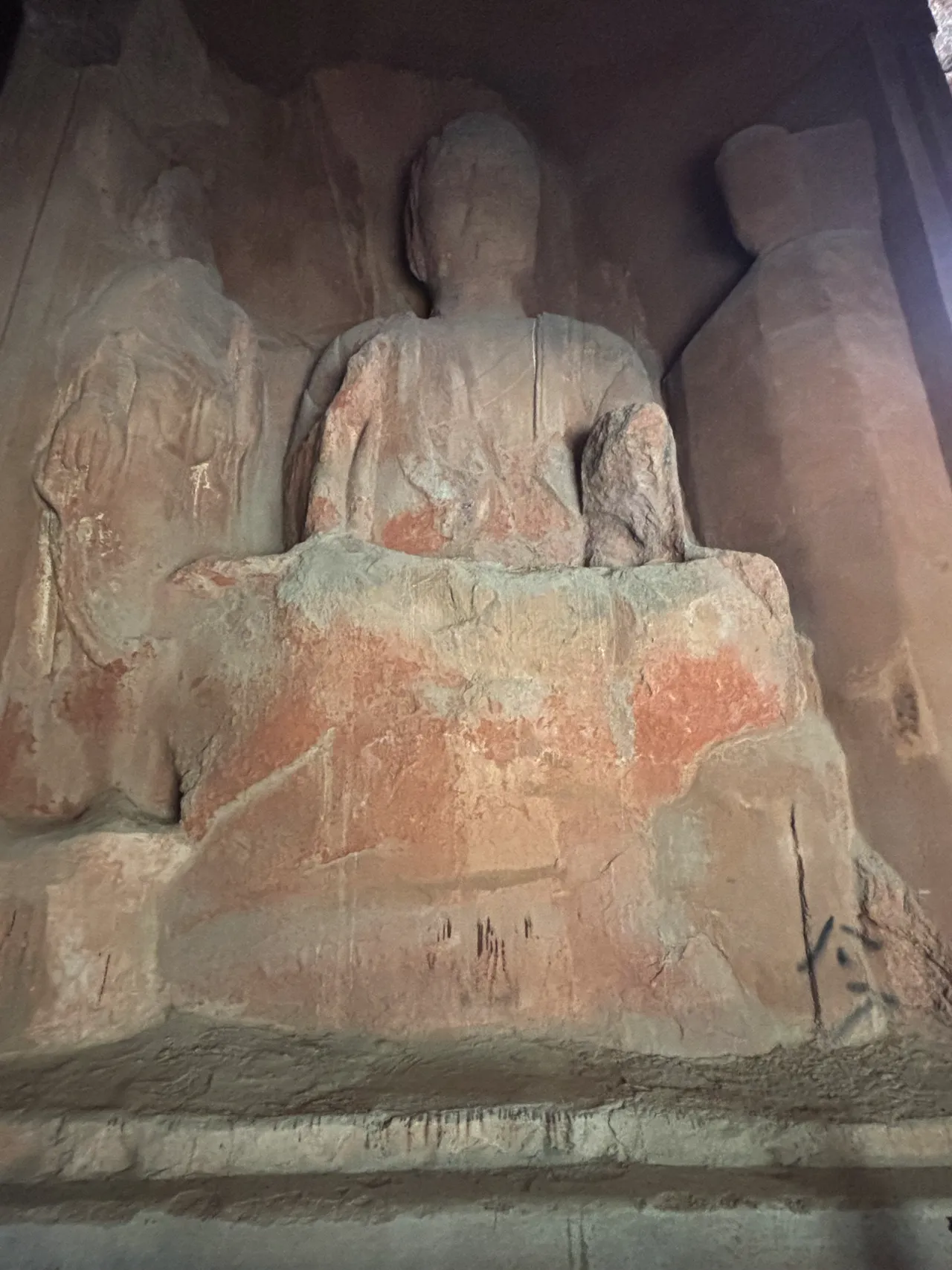
Significance in Buddhist Art
The statues of Buddhas in Cave 46 are particularly notable for their characteristic plump faces and large forms. These artistic choices reflect the aesthetic preferences and spiritual ideals of the period. The inner spatial structure of the cave, resembling a palace or temple, serves as a crucial resource for researchers studying the evolution of sculptural styles during the Northern Zhou Dynasty. This cave, therefore, not only embodies the architectural and artistic achievements of its era but also continues to inform and inspire contemporary scholarship in Buddhist art and architecture.
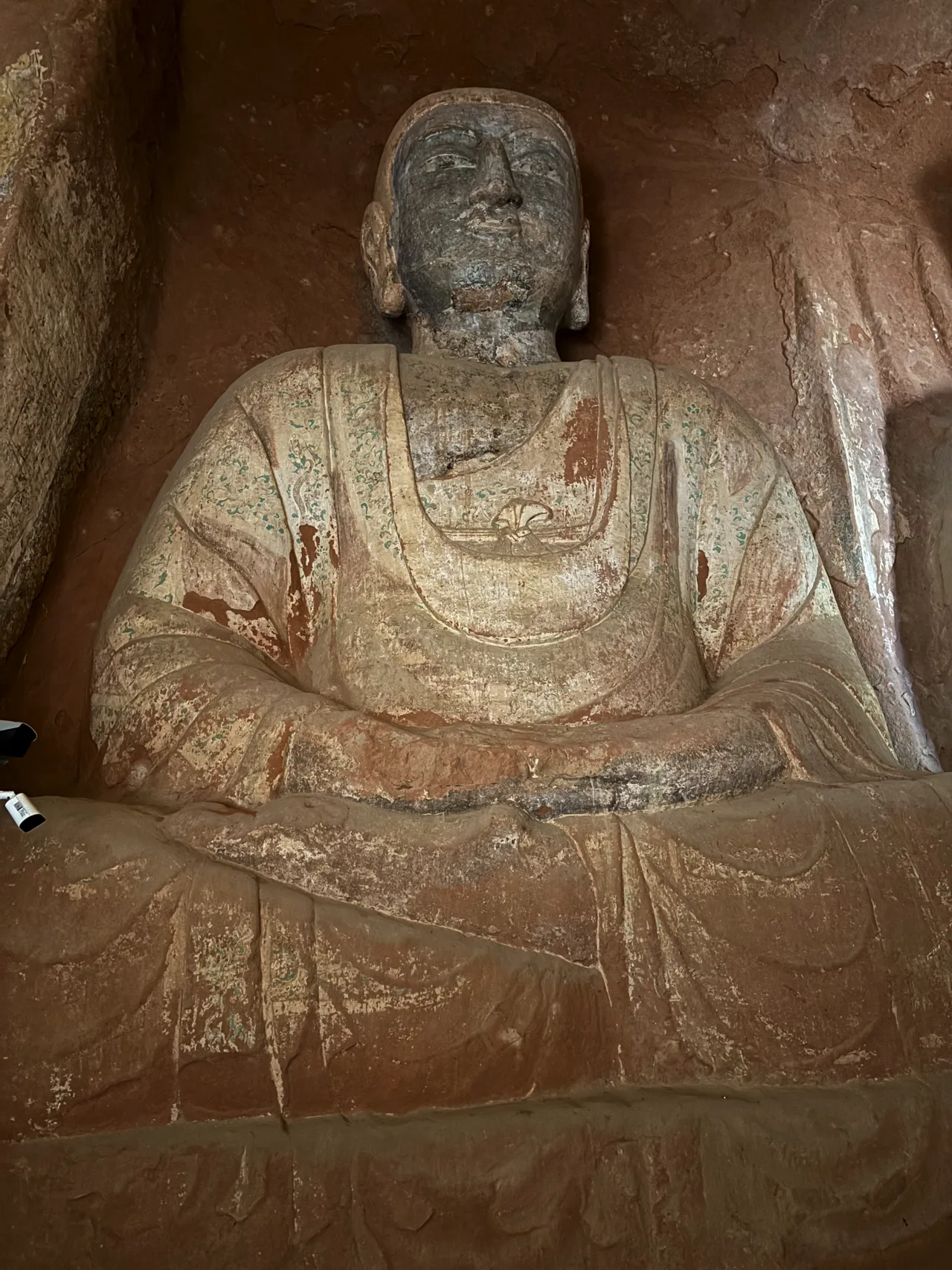
Xiangguo Temple (Cave 51)
Xiangguo Temple, also known as Cave 51, stands out as a remarkable example of religious architecture from the Northern Zhou Dynasty. Craftsmen carved the temple directly from a hill, featuring an inverted bucket-shaped roof, a square plan, and central pillars. Inside, it houses six stone statues, each standing seven meters high. Unfortunately, the construction of the cave remained incomplete due to Emperor Wu’s extermination of Buddhism in 574 AD.
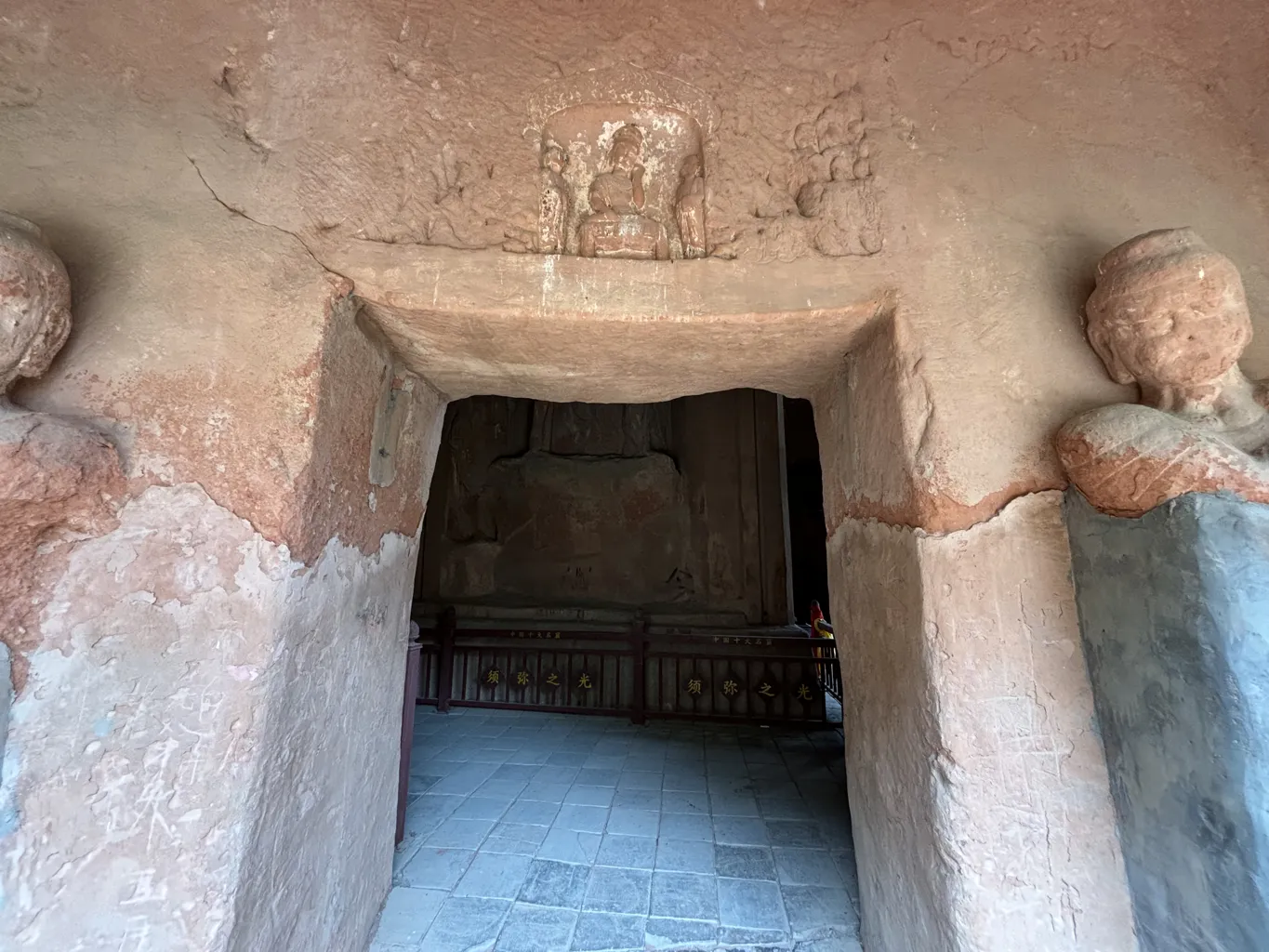
Impact of Natural Disasters and Restoration Efforts
In 1920, a devastating 8.5 magnitude earthquake struck, causing significant damage to the front part of the cave. However, in 1985, the relics administrative departments undertook crucial reinforcement and repair work. These efforts preserved the cave for future generations. Today, the cave is relatively well-preserved and nationally recognized for its majestic appearance, exquisite statues, and intricate craftsmanship. It epitomizes the pinnacle of artistic achievement in Xumi Mountain during the Northern Zhou Dynasty and ranks among China’s most significant grotto statues.
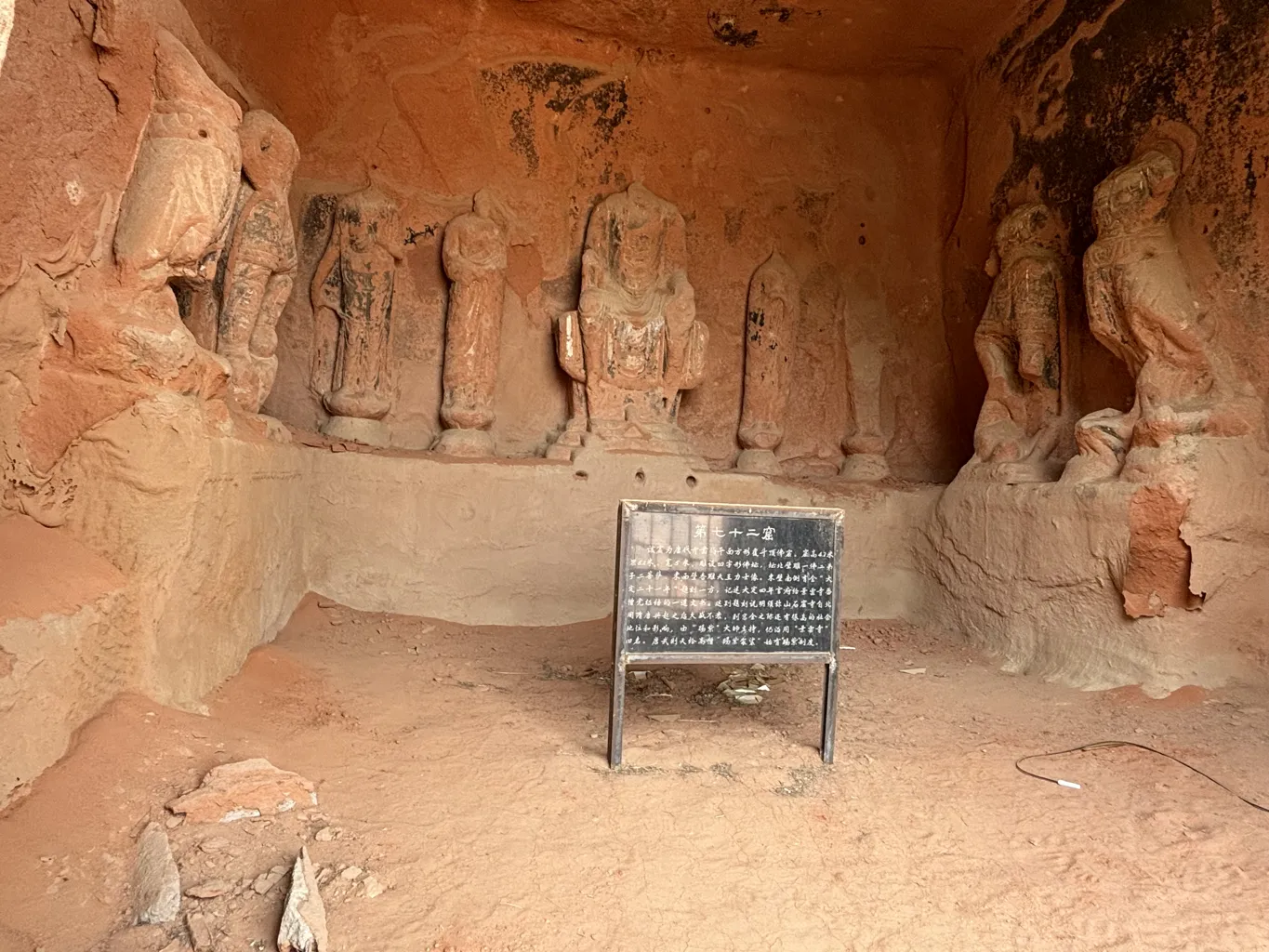
Xiangguo Temple Area
The area surrounding Xiangguo Temple features a cluster of caves, with Cave 51 being the most magnificent. Known as “The Light of Xumi Mountain,” this cave is part of a larger complex that includes 52 caves along the southeastern cliff face. These caves contain about a hundred statues from the Sui and Tang Dynasties, arranged in a honeycomb pattern. In total, the area boasts around 200 statues and numerous inscriptions and sculptures that chronicle the historical and cultural developments of the Xumi caves. This site holds immense historical value for the study of Buddhist art and the ancient culture of Yuanzhou.
Sources:
Information directly from a visit at Xumishan Grottoes

